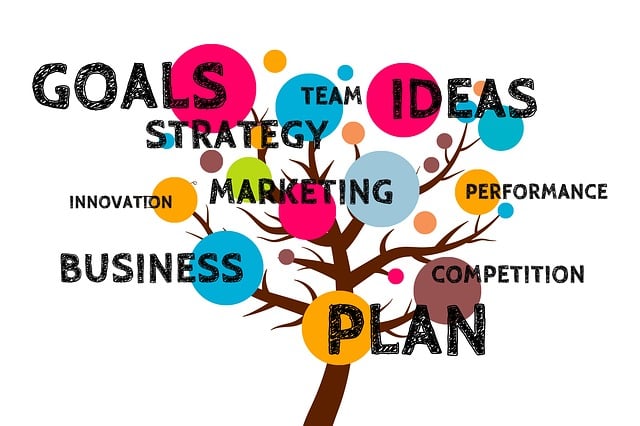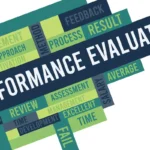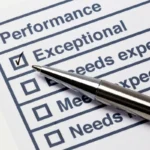How to Create a Personal Development Plan: Essential Steps and Strategies
Creating a personal development plan (PDP) is a transformative process that can help you identify your goals, strengths, and areas for improvement. By following essential steps and strategies, you can cultivate a roadmap that guides your growth and aids in achieving your desired outcomes.
Step 1: Self-Assessment
Before diving into your personal development plan, conducting a thorough self-assessment is vital. This involves reflecting on your current skills, interests, values, and experiences. Here are some methods to aid your self-assessment:
- Personality Tests: Tools like the Myers-Briggs Type Indicator (MBTI) or the DISC assessment can provide insights into your personality traits and potential career fits.
- Strengths and Weaknesses Analysis: List down what you believe are your key strengths and areas for improvement. This can help you identify where to focus your development efforts.
- Seek input from friends, family, or colleagues for valuable feedback. Their perspectives can reveal blind spots in your self-assessment.
Step 2: Define Your Goals
Once you understand yourself better, the next step is to set clear, measurable goals. When defining your goals, use the SMART criteria:
- Specific: Clearly define what you want to achieve.
- Measurable: Establish criteria to measure your progress.
- Achievable: Set realistic goals that are attainable.
- Relevant: Make sure your goals are aligned with your long-term objectives.
- Time-bound: Set a deadline for achieving your goals.
Example of SMART Goals:
| Goal Category | SMART Goal |
|---|---|
| Career Development | Gain a certification in project management by June 2024. |
| Skill Acquisition | Learn basic Spanish in 6 months by attending a weekly class. |
| Personal Growth | Read one self-help book per month for the next year. |
Step 3: Create an Action Plan
With your goals defined, it’s time to outline the steps required to achieve them. Breaking down large goals into smaller tasks can make them feel less overwhelming.
- Prioritize Tasks: Focus on Key Tasks, Identify the most crucial tasks and address them first.
- Set Deadlines: Assign realistic timelines to each task to keep yourself accountable.
- Resources: Identify the resources you need. This could include books, courses, mentors, or online tools.
Step 4: Implement Your Personal Development Plan
Now that you have a clear action plan, put it into motion. Here are some strategies to keep you on track:
- Daily Routine: Integrate your development activities into your daily or weekly schedule. Consistency is key to making progress.
- Track Progress: Regularly review your progress towards your goals. Are you reaching milestones? Adjust your plan as needed to stay aligned with your objectives.
- Stay Flexible: Life can be unpredictable. Be prepared to adjust your goals and action steps when necessary.
Step 5: Reflect and Review
Set aside time periodically (e.g., monthly or quarterly) to reflect on your development journey. Ask yourself the following questions:
- What achievements am I proud of?
- What challenges have I encountered, and how did I overcome them?
- Are my goals still relevant, or do they need tweaking?
By regularly reviewing your personal development plan, you ensure that it remains a living document that adapts to your evolving needs and aspirations.
Additional Strategies for Success
Here are some advanced strategies to optimize your personal development plan and maintain momentum:
- Find an Accountability Partner: Sharing your goals with someone else can provide motivation and accountability.
- Visualize Success: Create a vision board to visualize your goals. Keeping your aspirations at the forefront can serve as an inspiration.
- Celebrate Small Wins: Recognizing and celebrating your achievements, no matter how small, can boost your motivation.
Utilizing Technology
Consider leveraging modern technology to enhance your PDP. Apps and platforms like Trello, Asana, or Notion can help organize your tasks, track progress, and set reminders.
Final Thoughts
Creating a personal development plan is an ongoing journey that requires commitment, self-reflection, and adaptation. By following these essential steps and strategies, you can design a roadmap that empowers your growth and transforms your aspirations into reality. Start today, and take charge of your personal and professional development!
The Importance of Self-Assessment in Personal Growth
Self-assessment plays a crucial role in personal growth, allowing individuals to reflect on their strengths, weaknesses, and progress. By engaging in regular self-evaluation, you can gain insight into your personal values and motivations, which is vital for setting achievable goals.
It’s important to take a structured approach to self-assessment. One effective method is to use a SWOT analysis—assessing your Strengths, Weaknesses, Opportunities, and Threats. Here’s a brief overview of how you can utilize this framework:
| SWOT Component | Description |
|---|---|
| Strengths | Identify what you do well, including skills, knowledge, or experiences that give you an advantage. |
| Weaknesses | Acknowledge areas where you struggle. This could be a lack of certain skills or negative habits that hold you back. |
| Opportunities | Look for external factors that could benefit your personal growth, such as educational programs, networking events, or growing industries. |
| Threats | Consider challenges you may face that could hinder your development, like economic downturns or increased competition in your field. |
Self-assessment into your routine also allows for continuous feedback. It can be beneficial to keep a journal where you document your feelings, thoughts, and experiences. Writing down your daily experiences can help clarify your thoughts and reveal patterns in your behavior. This practice not only aids in processing your thoughts but also serves as a record of your evolution over time.
When assessing yourself, focus on specific areas of your life that impact your overall well-being. These areas often include:
- Career Development: Are you satisfied with your job? What skills do you need to advance?
- Personal Relationships: Evaluate the quality of your connections with friends and family.
- Health and Well-Being: Reflect on your physical and mental health.
- Education: Are you pursuing opportunities to learn and grow, whether formally or informally?
After identifying these areas, set SMART goals, which stand for Specific, Measurable, Achievable, Relevant, and Time-bound. For instance, if you find that your health is lacking, a SMART goal could be “I will attend a fitness class three times a week for the next three months.” This clarity guides your efforts and holds you accountable.
Engaging in self-assessment also cultivates emotional intelligence. As you become more aware of your reactions and emotions, you learn how to manage them better. This growth in emotional regulation can enhance your interactions with others and improve your decision-making processes.
Furthermore, seeking feedback from others can complement your self-assessment. Request insights from friends, family, or colleagues about your strengths and weaknesses. This advice may provide insights that you may overlook during your reflection. Always remember to approach feedback with an open mind and a willingness to grow.
Self-assessment promotes resilience as well. By tracking your progress and adjusting your goals based on your evaluation, you’re better prepared to tackle setbacks. Each obstacle becomes a learning opportunity rather than an endpoint. Over time, this adaptive mindset can nurture confidence and a proactive approach to life’s challenges.
Don’t forget to celebrate your achievements! Recognition of even the smallest milestones can fuel your motivation and reinforce the positive behaviors you strive to adopt. Set aside time to recognize your progress, whether through personal reflection or sharing your accomplishments with peers.
Self-assessment is a vital tool for personal growth. It allows you to take stock of your life, guide your decisions, and facilitate continuous improvement. By engaging in structured self-evaluation, documenting your thoughts, and setting SMART goals, you can enhance your emotional intelligence, build resilience, and cultivate a fulfilling life that aligns with your values. Embrace the journey of self-discovery—each step brings you closer to becoming the best version of yourself.
Setting Achievable Goals: A Guide to Effective Planning
Setting achievable goals is essential for personal growth and effective planning. Crafting a clear path toward your aspirations involves a structured approach, helping you stay focused and motivated. This guide walks you through the essentials of establishing realistic objectives that propel you forward.
Understanding the Importance of Goal Setting
Setting achievable goals not only provides direction but also boosts your confidence. Goals act as benchmarks for what you want to accomplish, allowing you to measure your progress. Without clear goals, it’s easy to become sidetracked by daily distractions. Research indicates that those who set goals tend to perform better than those who don’t. This is due to the clarity and motivation that specific goals provide.
Identify Your Core Values
Before diving into goal-setting, take time to reflect on your core values. Ask yourself what matters most in your life—whether it’s career advancement, health, relationships, or personal enrichment. By aligning your goals with your values, you ensure that your pursuits are meaningful, making them easier to commit to.
SMART Goals Framework
An effective way to set achievable goals is to use the SMART framework. Here’s what it entails:
- Specific: Clearly define what you want to achieve. Instead of saying, “I want to exercise more,” specify, “I want to run 3 times a week.”
- Measurable: Establish criteria to track your progress. For example, track how far you run each week.
- Achievable: Ensure your goal is realistic. If you’re a beginner, a 5K run may be a more attainable target than a marathon.
- Relevant: Your goal should resonate with your personal ambitions and overall life direction.
- Time-bound: Set a deadline to create urgency. For instance, “I will complete my 5K in 8 weeks.”
Using the SMART criteria transforms vague intentions into actionable plans, significantly increasing your chances of success.
Break Goals Down into Manageable Steps
Once you’ve set your overarching goals, break them down into smaller, manageable steps. This strategy not only makes the process less daunting but also helps maintain motivation. For instance, if your goal is to learn a new language:
- Week 1: Learn basic greetings and introductions.
- Week 2: Master essential vocabulary for everyday conversations.
- Weeks 3-4: Engage in short dialogues using learned vocabulary.
- Weeks 5-8: Begin speaking with native speakers or join a language group.
By breaking your goals into bite-sized tasks, you can celebrate small victories along the way, reinforcing your motivation.
Create a Scheduled Plan
Design a schedule that allocates time for your goals. Consistency is key. Incorporate your action items into your daily or weekly planner. This commitment to regular practice lays a foundation for long-term success.
Sample Weekly Planner:
| Day | Goal Activity | Time |
|---|---|---|
| Monday | Run 2 miles | 6:00 AM |
| Wednesday | Language practice with an app | 7:30 PM |
| Friday | Attend a yoga class | 5:00 PM |
| Sunday | Review weekly progress | 4:00 PM |
Accountability into your schedule enhances your commitment to your goals. Discuss your goals with a friend or mentor who can provide support and encouragement.
Monitor Progress and Adjust
Check in on your progress regularly. Monitoring keeps your goals in focus and allows you to celebrate your achievements. If you find certain steps too challenging, don’t hesitate to adjust your goals or action plan.
For example, if you realize a particular running schedule is too intense, modify it to fit your energy levels. Flexibility is crucial in not losing motivation. Remember, the journey toward achieving your goals is not a straight line, but a dynamic process.
Stay Motivated
Maintaining motivation can be challenging. To keep your enthusiasm high:
- Visualize success: Picture yourself achieving your goals.
- Reward yourself: Treat yourself for milestones achieved.
- Join communities: Engaging with like-minded individuals provides inspiration and accountability.
Setting achievable goals is not just about drafting a list to be checked off. It’s about fostering a space for personal growth and self-improvement. By utilizing structured frameworks, breaking down goals into manageable steps, and regularly reviewing progress, you can transform your aspirations into reality. Embrace the journey, and you’ll find satisfaction in every step taken toward your goals.
Overcoming Obstacles: Staying Motivated on Your Development Journey
Embarking on a personal development journey is an exciting experience filled with opportunities for growth and self-discovery. However, along the way, you’re bound to encounter obstacles that can test your resolve and shake your motivation. Understanding how to navigate these challenges is crucial for keeping your momentum alive.
Recognize the Obstacles
The first step in overcoming obstacles is recognizing what they are. These challenges can be external, like a lack of resources or support, or internal, such as fear, self-doubt, or negative thinking. Write down the specific obstacles you face; this will make them seem less daunting and help you devise strategies to tackle them.
Set Specific Goals
When you set clear, measurable goals, you create a roadmap for yourself. Specificity empowers you to identify exactly what you need to achieve, breaking down larger aspirations into manageable tasks. For example:
- Rather than saying, “I want to be healthier,” you could say, “I will exercise for 30 minutes, five days a week.”
- Rather than stating, “I want to read more,” say, “I will read one book per month.”
Develop a Routine
Creating a daily or weekly routine can significantly enhance your productivity. Routines help you establish habits that keep you moving toward your goals, making the process feel less overwhelming. Consider the following tips:
- Designate specific times for goal-related activities.
- Allocate short breaks to recharge and remain focused.
- Incorporate flexibility in your routine to accommodate life’s unpredictability.
Stay Accountable
Accountability can be a powerful motivator. Discuss your goals with someone you trust, such as a friend, family member, or mentor. This person can provide encouragement and check in on your progress. You could also join a group focused on personal development where members share updates and challenges.
Celebrate Small Wins
While aiming for long-term objectives is important, don’t overlook small victories along the way. Acknowledging these moments can keep your motivation alive. Consider putting together a progress journal where you can jot down any achievements, no matter how small. Here’s a simple table you could use:
| Date | Achievement | Feelings |
|---|---|---|
| 01/01/2023 | Completed first week of workouts | Excited! |
| 01/15/2023 | Read two chapters of a book | Proud! |
Utilize Visual Reminders
Visual reminders can serve as powerful motivators. Create a vision board featuring images, quotes, or symbols that resonate with your goals. Place it somewhere you’ll see frequently to remind yourself of what you’re working toward. This technique instantly brings your goals back into focus and can reignite your passion when motivation wanes.
Practice Self-Compassion
As you navigate your personal development journey, be kind to yourself. Understand that setbacks are a part of growth. Practicing self-compassion can prevent negative self-talk or feelings of failure from derailing your progress. Remind yourself that you are worthy of growth and that mistakes are simply learning opportunities. You could say, “I gave it my all, and that’s what counts.”
Seek Inspiration
Whenever you feel your motivation dipping, turn to sources of inspiration. This could be through books, podcasts, or talks by people you admire. Hearing stories of others who’ve faced similar challenges can rekindle your drive. Make it a habit to consume motivational content regularly, allowing it to fuel your journey.
Take Breaks and Recharge
Understand that rest is crucial. Taking breaks allows you to recharge, preventing burnout. Schedule regular time for activities that relax and invigorate you, whether that means spending time in nature, engaging in hobbies, or simply disconnecting from your devices.
Ultimately, overcoming obstacles on your personal development journey involves recognizing challenges, setting structured goals, and maintaining accountability. Adjusting your mindset by celebrating small victories and nurturing self-compassion contributes significantly to remaining motivated. With persistence and the right strategies, you can navigate these obstacles successfully!
Evaluating Your Progress: Techniques for Adjusting Your Personal Development Plan
When you’re on a journey of personal development, regularly evaluating your progress is essential. Your Personal Development Plan (PDP) isn’t static; it requires adjustments based on your experiences and changes in your goals or circumstances. Here are some techniques that can help you effectively assess and refine your plan.
Reflect on Your Initial Goals
Begin by revisiting the goals you set in your personal development plan. Take time to analyze each goal. Are they still relevant to your current situation? Has something changed in your life that necessitates a shift in focus?
A simple table can help visualize this evaluation:
| Original Goal | Current Relevance | Action Needed |
|---|---|---|
| Improve Public Speaking | Still Relevant | Attend a workshop |
| Learn Spanish | Not Relevant | Replace with learning French |
| Increase Physical Fitness | Still Relevant | Set a new exercise routine |
Use this table format to easily see where your focus should change and what needs attention.
Measure Your Achievements
Track your achievements against your original objectives. This can include both qualitative and quantitative data. For example, if your goal was to read more books, tally the number you’ve read in the last six months compared to your goal.
You might also want to categorize your achievements:
- Short-term Goals: What have you accomplished recently?
- Medium-term Goals: Which goals are you on track to meet?
- Long-term Goals: Are you closer to your ultimate aspirations?
Measuring achievements not only boosts motivation but also offers insights into what’s working and what needs improvement.
Gather Feedback
Sometimes, we may not see the full picture of our growth. Seeking feedback from friends, mentors, or colleagues can provide new perspectives on your progress. Prepare a few specific questions to guide the feedback process:
- What strengths do you observe in my recent work?
- Are there areas where you think I should focus more attention?
- How do you perceive my growth compared to six months ago?
This method enriches your understanding and can illuminate strengths you weren’t aware of, as well as areas that require extra effort.
Adjusting Your Plan
Once you’ve reflected and gathered feedback, it’s crucial to tweak your personal development plan accordingly. Here’s how:
- Prioritize Adjustments: Not all changes are of equal importance. Focus on the adjustments that will yield the most significant benefits.
- Set New Milestones: As you adjust your goals, set new, achievable milestones to keep you motivated.
- Reallocate Resources: If you’ve changed your focus, consider reallocating your time, energy, and resources to align with your new priorities.
Establish a Regular Review Schedule
Make it a habit to regularly evaluate your PDP. Set a schedule that works for you—whether it’s monthly, quarterly, or bi-annually. Regular reviews keep you accountable and ensure you remain aligned with your goals as they evolve. During these reviews, follow a simple checklist:
- Have I met my previous objectives?
- Are my goals still relevant?
- What new challenges have arisen?
- What can I learn from my experiences?
Use a Personal Development Journal
Maintaining a personal development journal is a fantastic way to track your progress over time. Record not only your accomplishments but also your thoughts and feelings about your journey. Writing regularly helps you process your experiences and can reveal patterns in your growth area.
Your journal could include sections like:
- Daily Reflections: What went well today? What didn’t?
- Challenges Faced: How did I overcome these challenges?
- Goals for Tomorrow: What specific actions will I take to improve?
Embrace Flexibility
It’s vital to remain flexible with your personal development plan. Life is unpredictable, and new opportunities or challenges will arise. Embrace the process and be willing to adapt as necessary. Here’s a simple reminder for yourself:
- It’s okay to change direction.
- Growth takes time and patience.
- Celebrate your successes, however small they may seem.
By employing these techniques, you will not only adjust your personal development plan effectively but also enhance your overall personal growth. Amid the busy nature of life, remember that evaluating your progress is not just a task; it’s an ongoing journey of self-discovery and improvement.
Conclusion
Creating a personal development plan (PDP) is more than just setting goals; it’s about carving a path towards personal growth and fulfillment. As we navigate through life, the importance of a structured plan becomes increasingly evident. The essential steps and strategies we’ve explored highlight that everyone, regardless of their current circumstances, can cultivate a roadmap to success and self-actualization.
Self-assessment serves as the foundation of this journey. By reflecting on your strengths, weaknesses, values, and interests, you gain a clearer understanding of where you stand and where you want to go. This introspection is crucial; it’s not merely a step to check off a list. It becomes a guiding lighthouse through tumultuous waters, illuminating the areas that require your attention and investment. Without a thorough self-assessment, your goals may lack clarity or direction, resulting in frustration or stagnation. Embrace self-assessment as a continuous practice, not just a one-time exercise, as it keeps you grounded and aligned with your evolving self.
Setting achievable goals is another cornerstone of a successful personal development plan. The SMART criteria—Specific, Measurable, Achievable, Relevant, and Time-bound—provide a solid framework that keeps you focused. Goals should stretch you, yet remain attainable, so you don’t feel overwhelmed. Start with short-term goals that provide quick wins, which can boost your motivation and momentum. As you celebrate these smaller achievements, you’ll find the desire to tackle your long-term ambitions grows stronger. This process transforms challenges into stepping stones, fostering a sense of accountability and commitment that fuels progress.
However, the journey of personal development is rarely smooth. Obstacles are a natural part of growth. Understanding how to overcome these hurdles is crucial for maintaining motivation. It’s essential to cultivate resilience; setbacks should not signal the end of your journey but rather serve as learning opportunities. Keep your vision front and center, and remind yourself of why you set these goals in the first place. Regularly revisiting your motivations can rekindle your passion and determination. Consider building a support system around you—friends, mentors, or even online communities can offer encouragement and fresh perspectives when you need it most.
Equally important is the need for regular evaluation of your progress. Without reflection and assessment, it’s easy to drift off course. Make it a habit to review your personal development plan frequently. This might mean weekly check-ins to assess what strategies are working and what needs adjustment. Use techniques like journaling or progress tracking to document your journey; seeing your progress on paper can offer clarity and a sense of achievement. Should you find yourself straying from your objectives, that’s not a failure—it’s merely an opportunity to recalibrate. Flexibility is key. As life unfolds, your circumstances, interests, and goals may shift and evolve. A rigid plan can lead to frustration, while a dynamic approach invites continuous improvement and adaptation.
In addition to all these elements, a personal development plan fosters a growth mindset. By embracing challenges and viewing failures as temporary, you build a solid foundation for lifelong learning. This open-minded approach can significantly impact all aspects of your life, from personal relationships to career success.
Personal development is a continuous journey of discovery. It requires introspection, effort, and a willingness to make changes along the way. The steps and strategies outlined throughout this process are tools designed to empower you to take charge of your growth actively. By understanding yourself better, establishing realistic and motivating goals, overcoming setbacks with resilience, and routinely evaluating your plan, you create a living document that fuels your aspirations.
Ultimately, remember that personal development is a deeply personal journey. What works for one person might not work for another. Stay attuned to your unique needs, aspirations, and circumstances as you forge your path. Your personal development plan is a reflection of you and can be a powerful vehicle for transformation, resilience, and achievement. You have the tools at your disposal—now, it’s time to take action and embark on this exciting journey toward self-discovery and personal success.
Here are the links to the additional resources:
Books:
Apps:
Courses:
These links should provide you with direct access to the resources mentioned.










